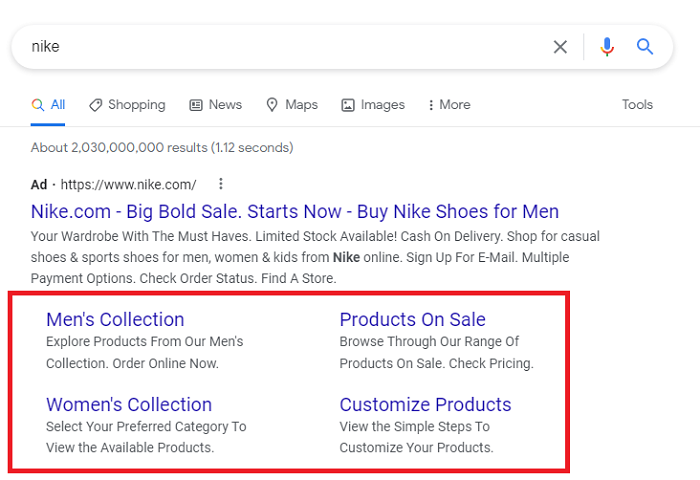“Ad Extensions: Utilizing Additional Information to Stand Out” – Ad Extensions Utilizing Additional Information to Stand Out opens the door to a world where your advertising efforts are not just seen but truly shine. In a marketplace teeming with competition, the use of ad extensions equips marketers with powerful tools to convey additional details that engage potential customers and elevate the effectiveness of their campaigns. This approach not only enhances visibility but also provides a richer context for audiences, leading to improved click-through rates and conversions.
Exploring the various types of ad extensions, from site links and callouts to structured snippets, we delve into how these features serve as a beacon of information that guides consumers through their decision-making journey. By strategically leveraging these extensions, advertisers can highlight unique selling points, promote special offers, and ultimately stand out in the crowded digital landscape.
In a world overflowing with information, the ability to persuade and influence others is not just a skill but an art form. Whether you’re in business, education, or simply navigating social interactions, mastering the art of persuasion can significantly enhance your effectiveness in conveying ideas, building relationships, and achieving your goals. This article will delve into the intricacies of persuasive communication, offering insights and techniques to help you become a more compelling communicator.

Understanding Persuasion
Persuasion is the process of convincing someone to understand, accept, or act in accordance with your viewpoint. It goes beyond mere argumentation; it involves connecting with your audience on an emotional level, understanding their needs, and aligning your message with their values. Aristotle summed this up in his rhetorical appeals: ethos (credibility), pathos (emotional appeal), and logos (logical argument). Mastering these elements can elevate your persuasive abilities to new heights.
The Power of Ethos: Building Credibility
Your credibility as a speaker or writer significantly impacts your ability to persuade. Ethos is about establishing trust and authority; it’s about proving that you know what you’re talking about. To build ethos, consider the following strategies:
- Demonstrate Expertise: Share your qualifications, experiences, or insights that lend weight to your argument. When your audience knows you are knowledgeable, they are more likely to listen.
- Be Authentic: Authenticity resonates with audiences. Share personal stories or anecdotes that illustrate your points—this creates a connection and shows vulnerability.
- Use Reliable Sources: Cite studies, statistics, or expert opinions to reinforce your arguments. This not only adds weight to your claims but shows that you have done your homework.
Engaging Emotions with Pathos: “Ad Extensions: Utilizing Additional Information To Stand Out”
While logic is essential, emotions often drive decisions. Pathos engages the audience’s feelings, making your message more relatable and impactful. To effectively appeal to pathos:
- Tell Stories: People are wired to connect with stories. Use vivid narratives that evoke empathy or excitement. A well-told story can turn abstract concepts into relatable experiences.
- Create Visual Imagery: Paint a picture with your words. Descriptive language and metaphors can evoke feelings and allow the audience to visualize your message.
- Appeal to Shared Values: Identify common values or beliefs that resonate with your audience. Highlighting shared experiences fosters a sense of community and strengthens your persuasive appeal.
Logical Arguments: The Role of Logos
While emotions are powerful, logical reasoning is equally crucial. Logos involves presenting clear, rational arguments that support your case. Effective strategies include:
- Organize Your Thoughts: Present your ideas in a logical sequence. Start with a clear thesis, provide supporting arguments, and conclude with a strong summary. This structure helps your audience follow your reasoning.
- Use Data and Evidence: Incorporate facts, figures, and research to back up your claims. This not only enhances your credibility but also appeals to the analytical side of your audience.
- Acknowledge Counterarguments: Address potential objections to your argument. By acknowledging opposing views, you demonstrate that you understand the complexity of the issue, which can strengthen your position.
Techniques to Enhance Persuasion
In addition to understanding the foundational elements of persuasion, there are specific techniques you can employ to enhance your effectiveness:
- Use the Power of Repetition: Repetition reinforces key points and makes them more memorable. Through strategic repetition, you can embed your message in the minds of your audience.
- Utilize Questions: Asking rhetorical questions can engage your audience and prompt them to think critically about your arguments. It also creates a dialogue, making them more invested in your message.
- Establish Reciprocity: People are more likely to be persuaded if they feel they are receiving something in return. Offer value, whether it’s information, insight, or genuine appreciation.
- Be Passionate: Your enthusiasm can be contagious. When you convey genuine passion about your topic, it engages your audience and compels them to listen.
Practicing Persuasion in Everyday Life
While persuasive techniques are crucial in formal settings, they can also enhance our everyday interactions. Whether you’re negotiating a business deal, persuading a friend to see a movie, or convincing your child to try a new food, the principles of persuasion apply. Practice these skills regularly to refine your approach and build confidence.
Conclusion: The Journey of Persuasion
Becoming a master persuader is an ongoing journey. It requires practice, patience, and a willingness to understand others’ perspectives. By honing the skills of ethos, pathos, and logos, and employing effective techniques, you can elevate your persuasive communication to new heights. Remember, persuasion isn’t about manipulation; it’s about connection. The more you connect with your audience—emotionally, logically, and credibly—the more you will inspire and influence them.



